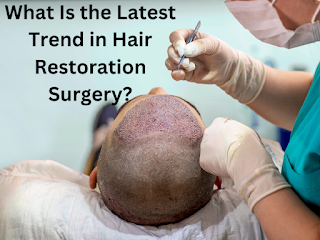What Is the Latest Trend in Hair Restoration Surgery?
Hair restoration surgery is a good option for people in India who want to grow their hair back after it has been damaged by hair loss, such as with alopecia. This article discusses the latest trends in Indian hair restoration surgeries and how they are changing over time.
What is a Hair Restoration Surgery?
Hair loss is a common experience, and many people turn to hair restoration surgery for relief. There are several different types of hair restoration surgery available, but the two most popular are Follicular Unit Transplantation (FUT) and strip procedures.
There are many other types of hair restoration surgery available, but these are the two main options. If you’re considering hair restoration surgery at the best HairTransplant Clinic Moti Nagar, be sure to talk to an expert about your options and see what would work best for you.
Side Effects of Hair Restoration Surgery in India
One of the most popular hair restoration surgeries in India is the FUE technique. FUE stands for follicular unit extraction, which is a surgical procedure that involves removing individual hair follicles from the scalp. This method is less invasive than traditional methods when you perform it at Hair Transplant in Janakpuri such as alopecia areata surgery, and it can be done without any general anesthesia. In fact, most patients who undergo FUE surgery report minimal pain or discomfort.
One potential downside of FUE surgery is that it may not be as successful as other procedures when it comes to restoring hair density. Additionally, this technique may not be suitable for people with sensitive skin or those who have large areas of baldness. Finally, because FUE requires a surgical microscope to precision cut hair follicles, it may result in more scarring and distortion than other hair restoration methods.
Does a Hair Restoration Surgery Last?
Hair transplantation is the most common type of hair restoration surgery in India. It involves transferring healthy hair from another part of the body to the scalp. The downside of this procedure is that it is not always successful; some patients may end up with sparse or patchy hair growth.




Comments
Post a Comment